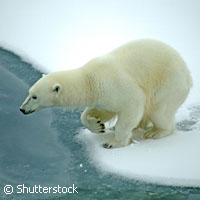Report card sounds warning bell for Arctic
An international group of environmental experts is waving another red flag as new research from the Arctic region shows that the area is not getting any relief from climate change, which is impacting not only the ecosystems and the lives of creatures living there but also the weather patterns in the most populated parts of the northern Hemisphere. The findings are presented in the 'Arctic Report Card', an annual review of the conditions up north. Commonly referred to as the 'planet's refrigerator', the Arctic region is being affected by record temperatures in Greenland and snow cover drops as well as glacier area loss, according to the National Oceanic and Atmospheric Administration (NOAA) in the US, which oversees the review each year. Some of the highlights of the report, says the 69-strong research team, include another drop in summer sea ice - the 2009-2010 summer sea ice cover extent was the third lowest since satellite monitoring began in 1979 - and increased thinning of sea ice, as well as a record minimum of Arctic snow cover duration since researchers started recording levels in 1966. The scientists found that the higher air temperatures in the Arctic during autumn are playing havoc with atmospheric circulation in both the Arctic and northern mid-latitudes. The winter of 2009-2010 saw extremely low temperatures and significant snowfalls in mid-latitudes as well as changes in the wind patterns of the Arctic. According to the researchers, these are related to a phase of the Arctic Oscillation (an atmospheric circulation pattern in which the atmospheric pressure over the polar regions varies in opposition with that over middle latitudes (about 45 degrees north) on time scales ranging from weeks to decades). 'To quote one of my NOAA colleagues, "whatever is going to happen in the rest of the world happens first, and to the greatest extent, in the Arctic",' explained Dr Jane Lubchenco, Undersecretary of Commerce for Oceans and Atmosphere, and NOAA administrator. 'Beyond affecting the humans and wildlife that call the area home, the Arctic's warmer temperatures and decreases in permafrost, snow cover, glaciers and sea ice also have wide-ranging consequences for the physical and biological systems in other parts of the world. 'The Arctic is an important driver of climate and weather around the world and serves as a critical feeding and breeding ground that supports globally significant populations of birds, mammals and fish.' The Climate Program Office of the NOAA introduced the first Arctic Report Card in 2006, effectively establishing a baseline of conditions at the start of the 21st century to keep an eye on the changing conditions in the Arctic. The scientists use a colour-coded system: red means there is consistent evidence of warming in the region, and yellow points to warming impacts evident in various climate indicators and species.
Countries
United States



